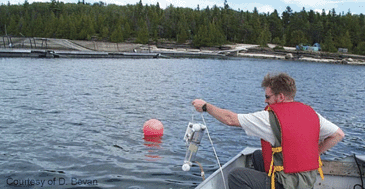Estimating aquatic phosphorus concentrations 30 metres down-current from a rainbow trout cage array
Abstract
Aquatic total phosphorus (Tot-P) is measured 30 m distant from rainbow trout (Oncorhynchus mykiss) cages, for regulatory compliance on the Canadian side of Lake Huron. The ability to predict changes in near-field Tot-P concentrations from changes in production, or to explain near-field concentrations in the event of compromised reference sites, would be very useful for managers and farmers. A logical first step in the development of a near-field model is the estimation of down-current Tot-P concentrations. A nutritional mass balance approach was used to calculate the amount of non-settleable Tot-P which was divided by the corresponding flushing volume over four separate production periods. Despite a number of uncertainties, such as cage effects on flushing volume, the contribution of particulate phosphorus, fish distribution, feed conversion ratio, and ingestion–excretion time; accuracy (slope = 1.06) and precision (r2 = 0.75) of modelled estimates fit well with empirical results. It was concluded that 30 m down-current Tot-P concentrations could be modelled under a diverse set of culture and environmental conditions, suggesting typical ‘near-field’ concentrations of Tot-P can be explained on the basis of farm activities.


 Please wait while we load your content...
Please wait while we load your content...